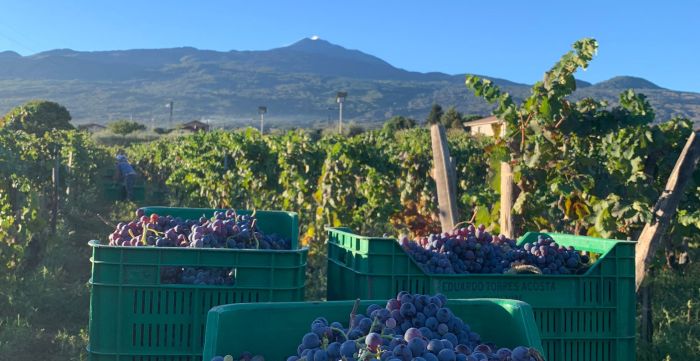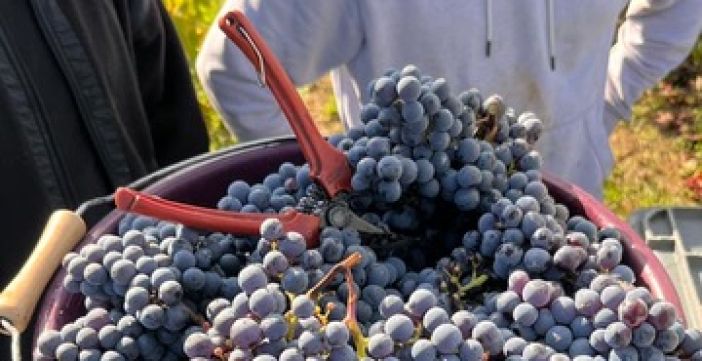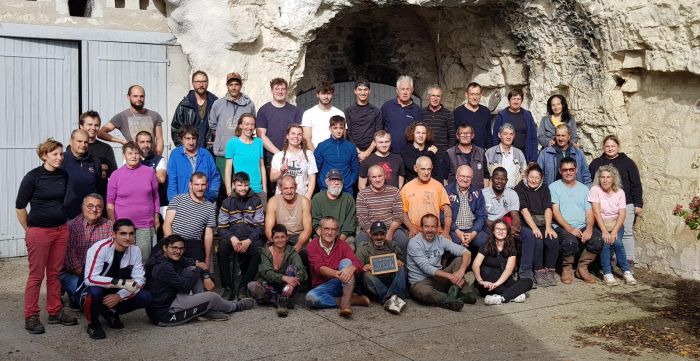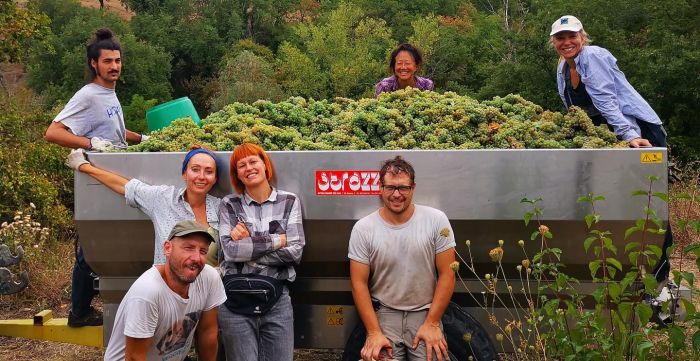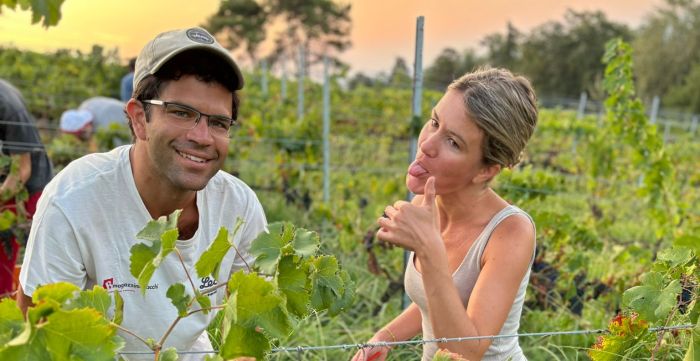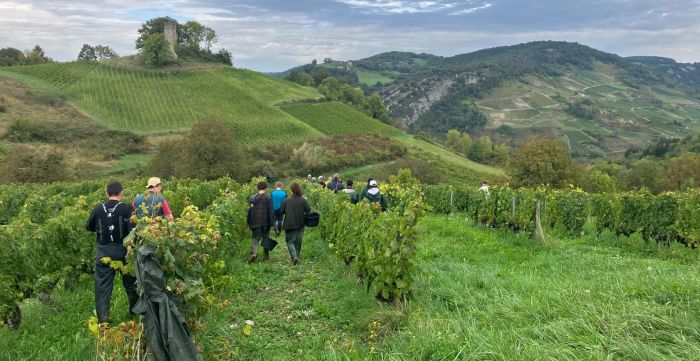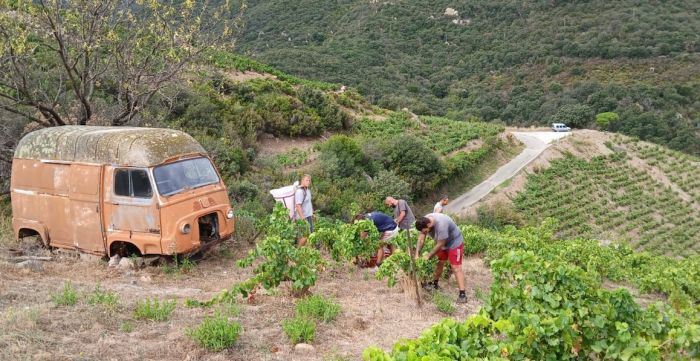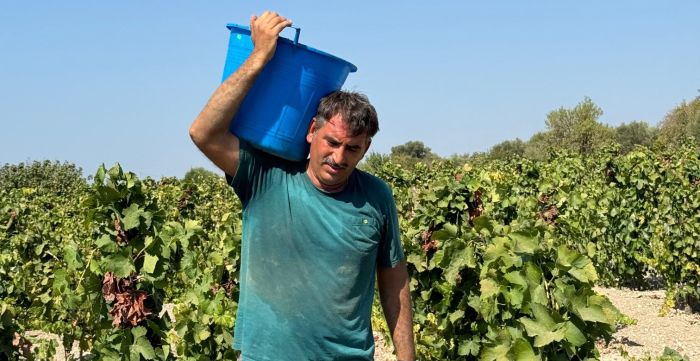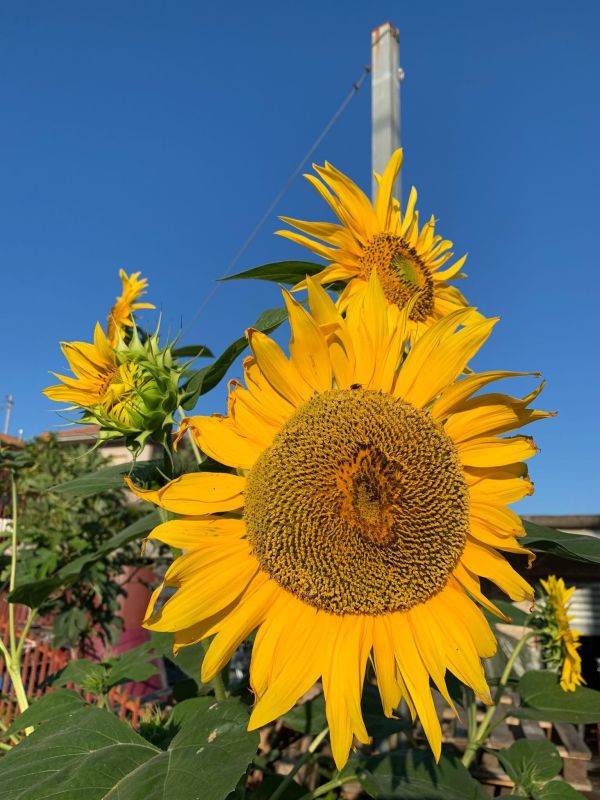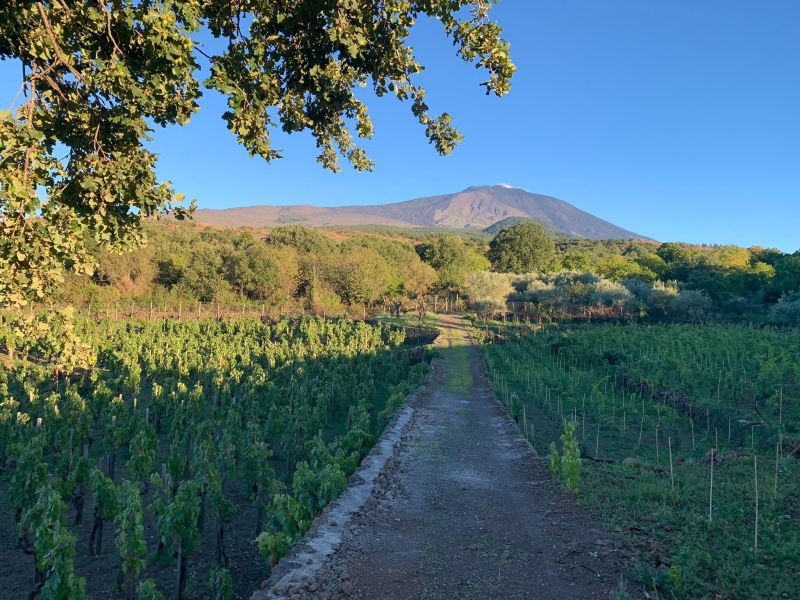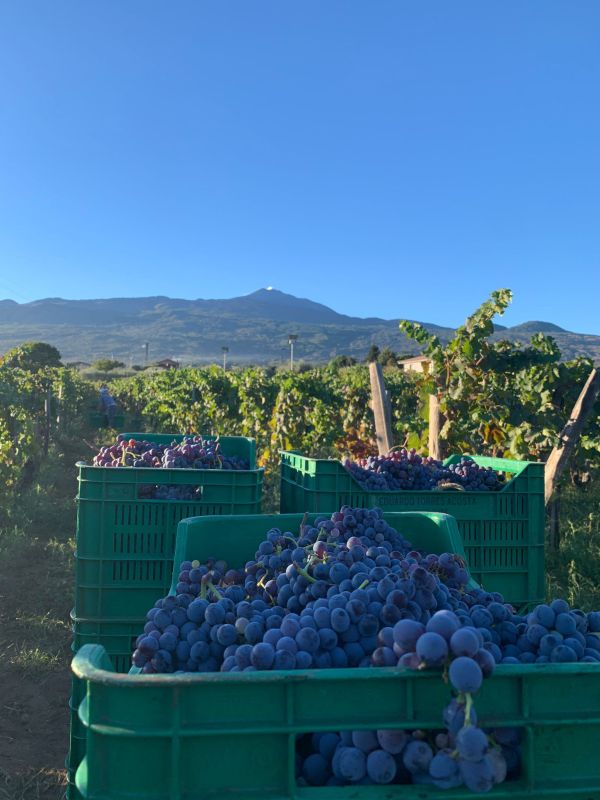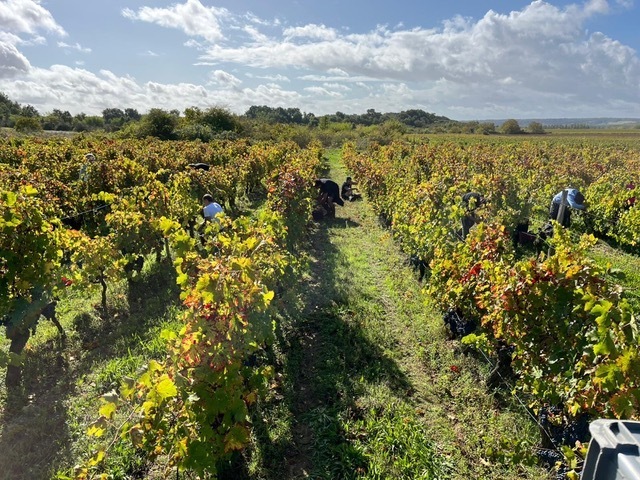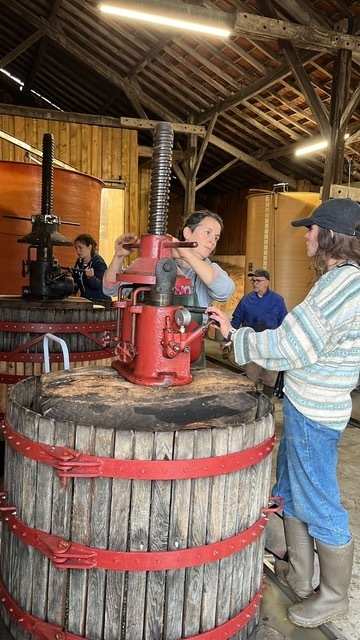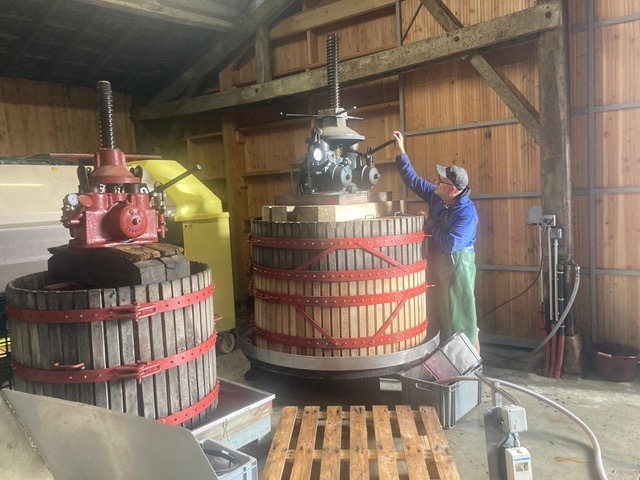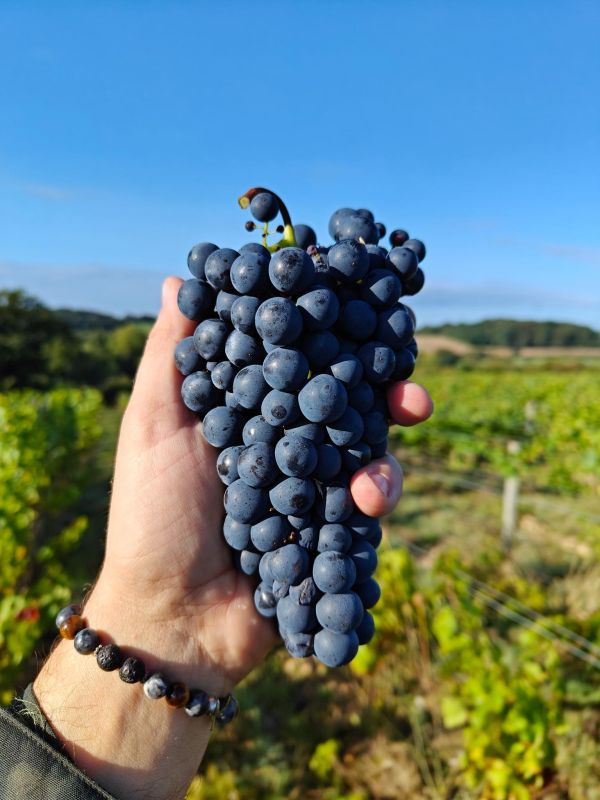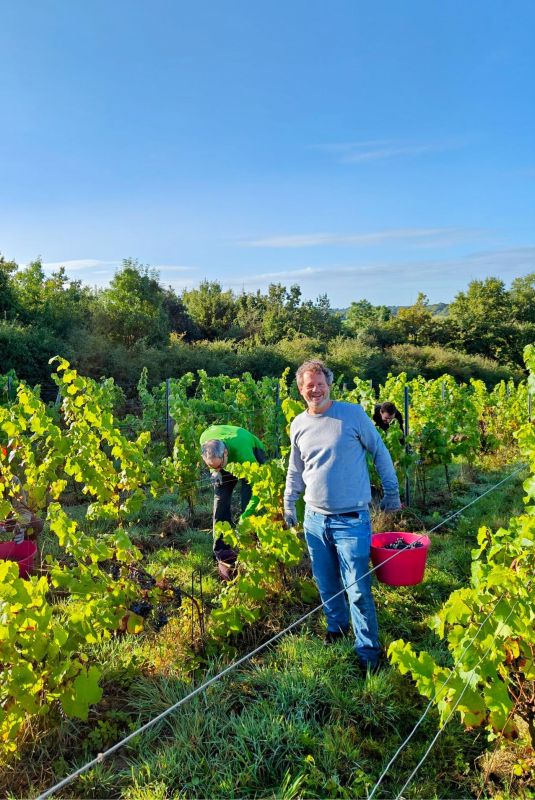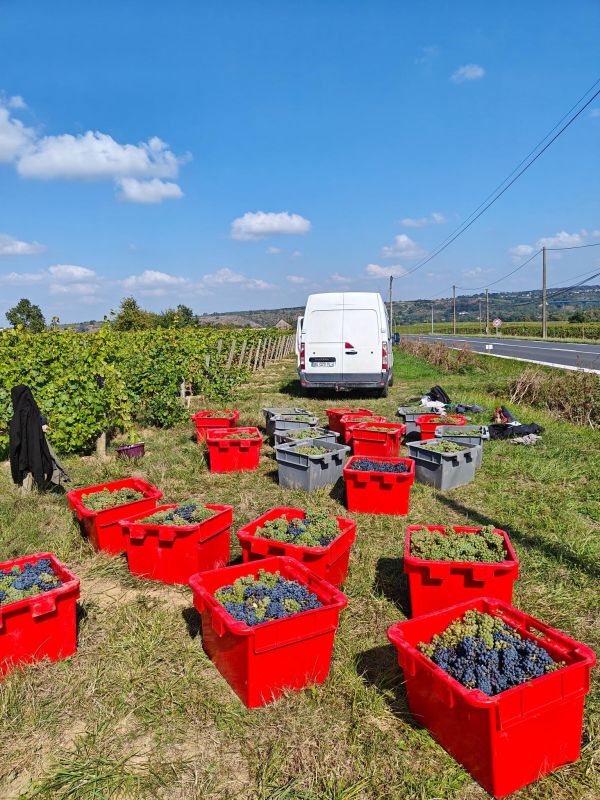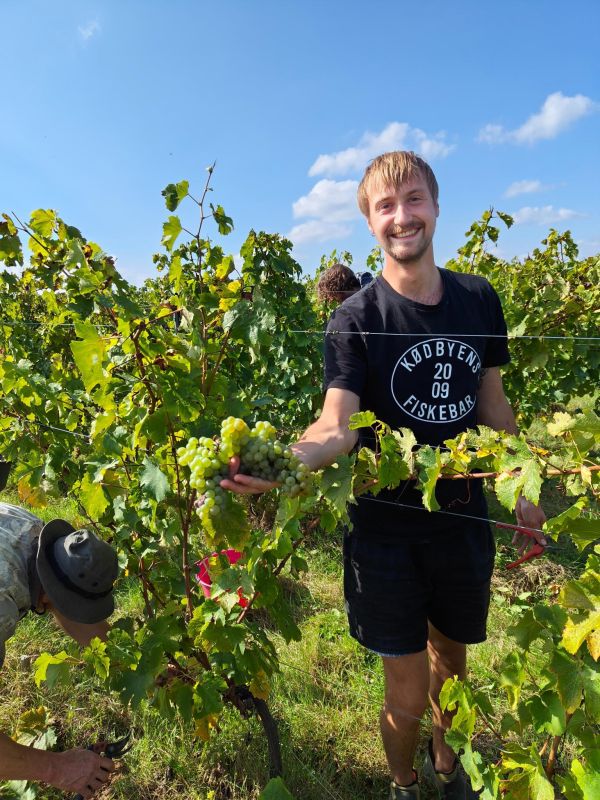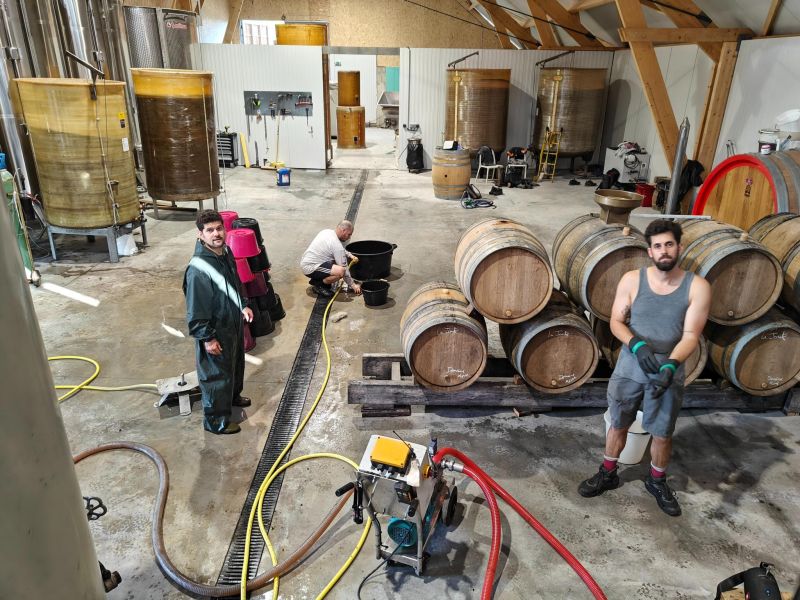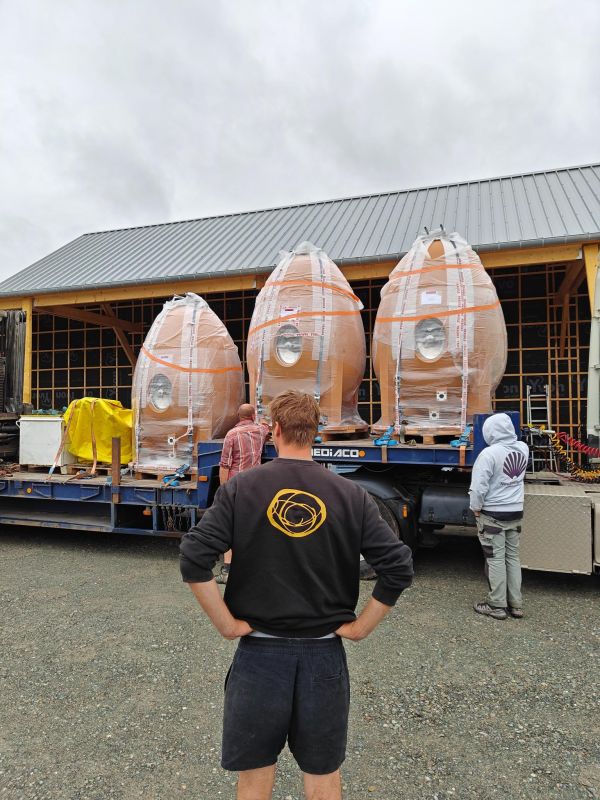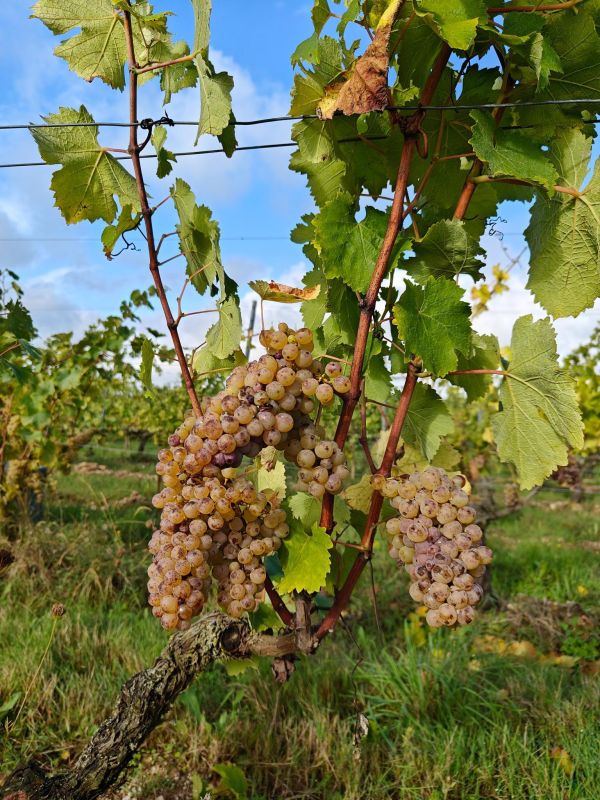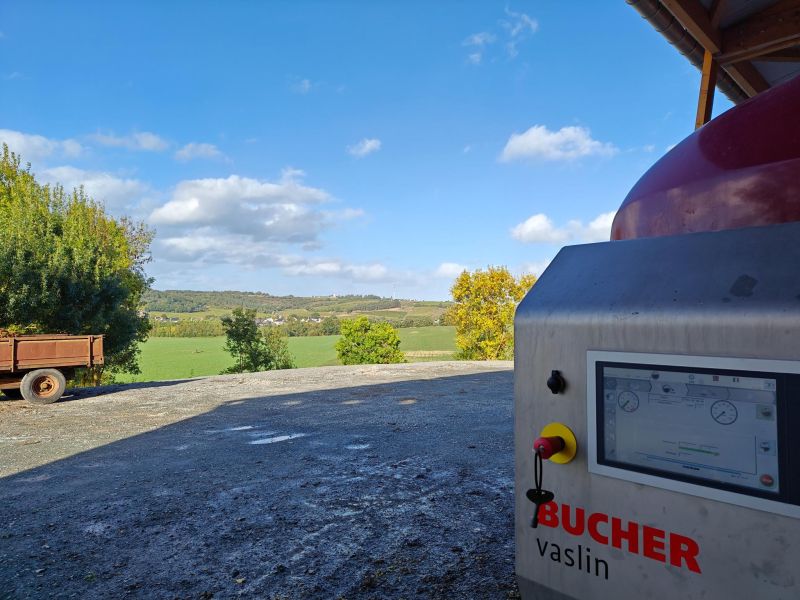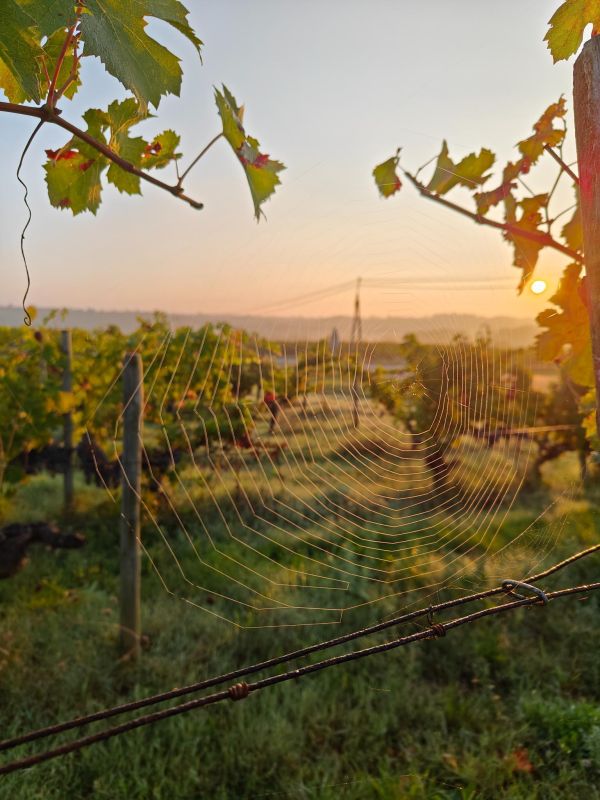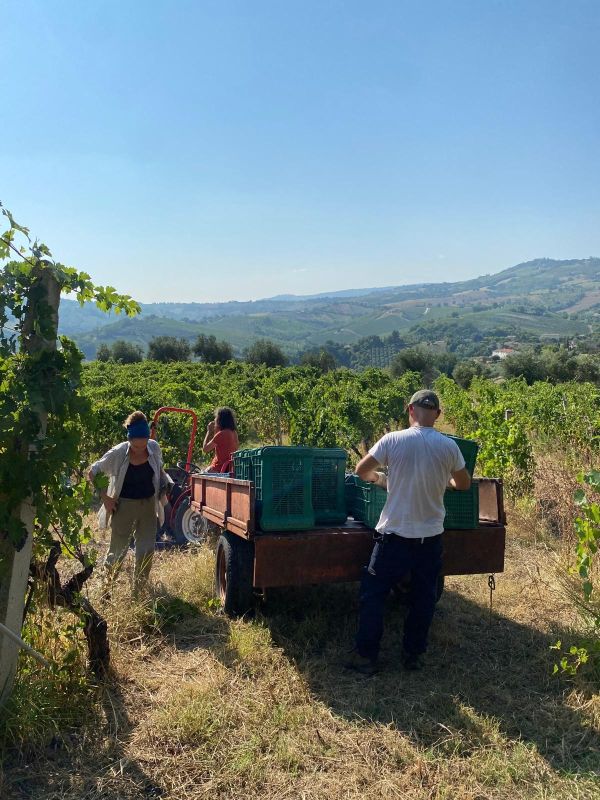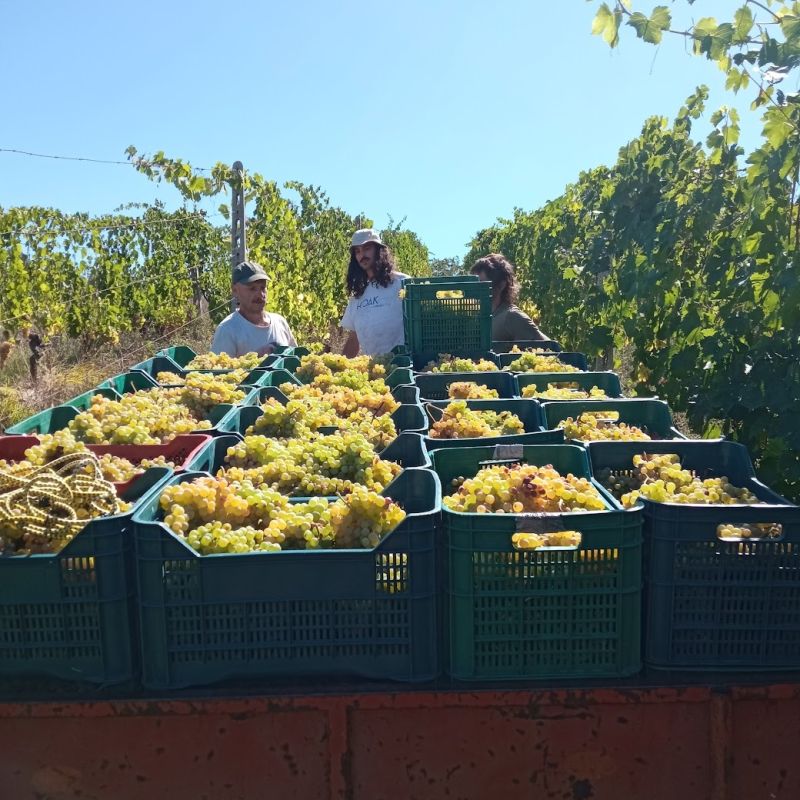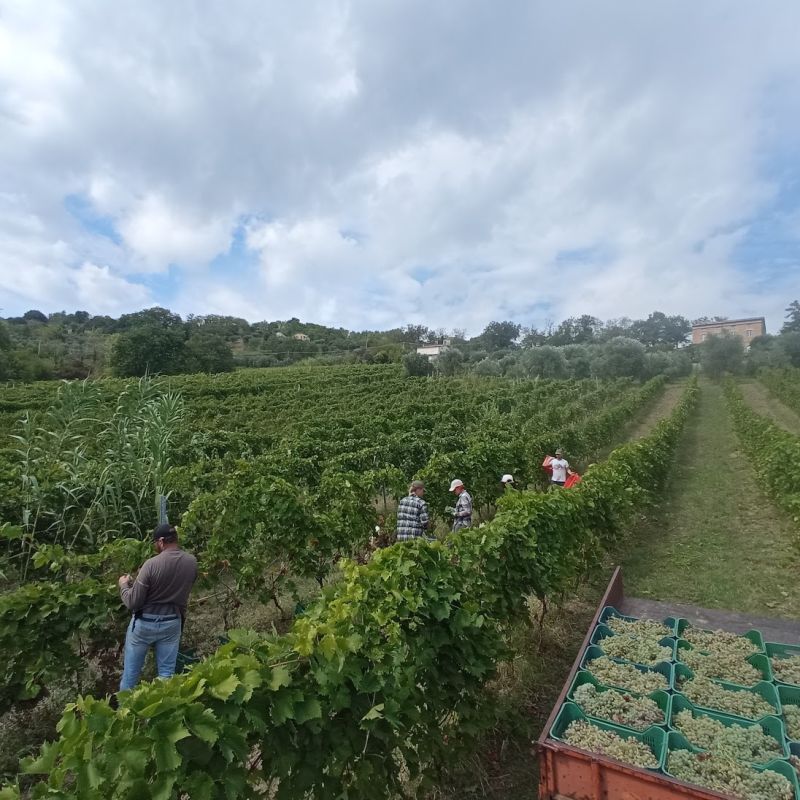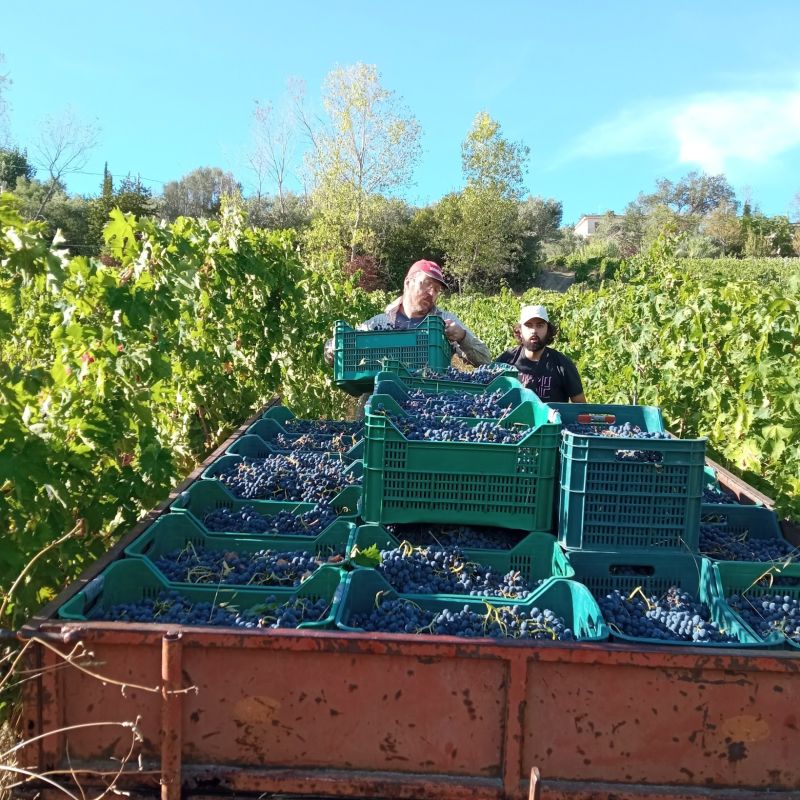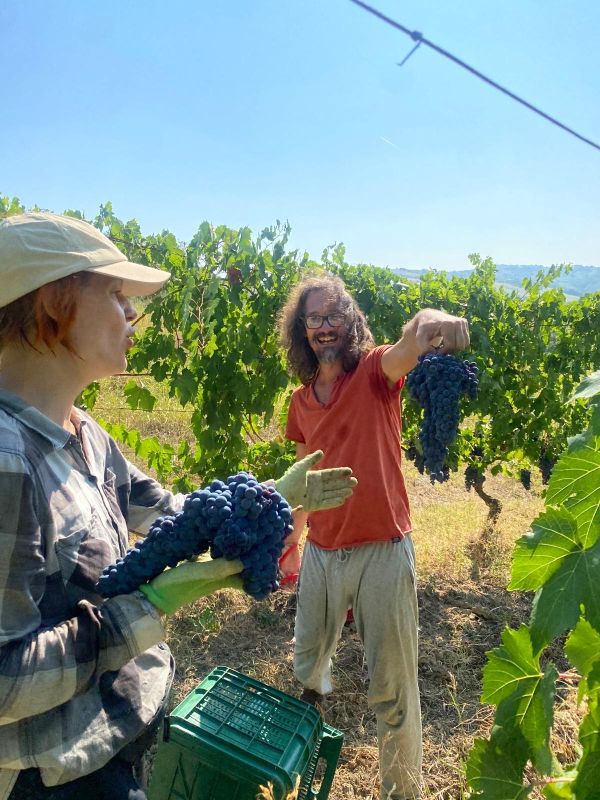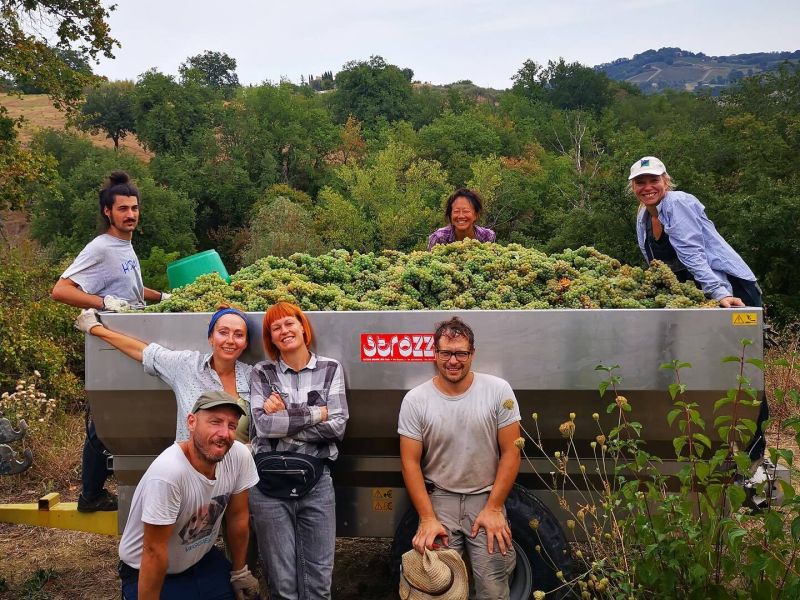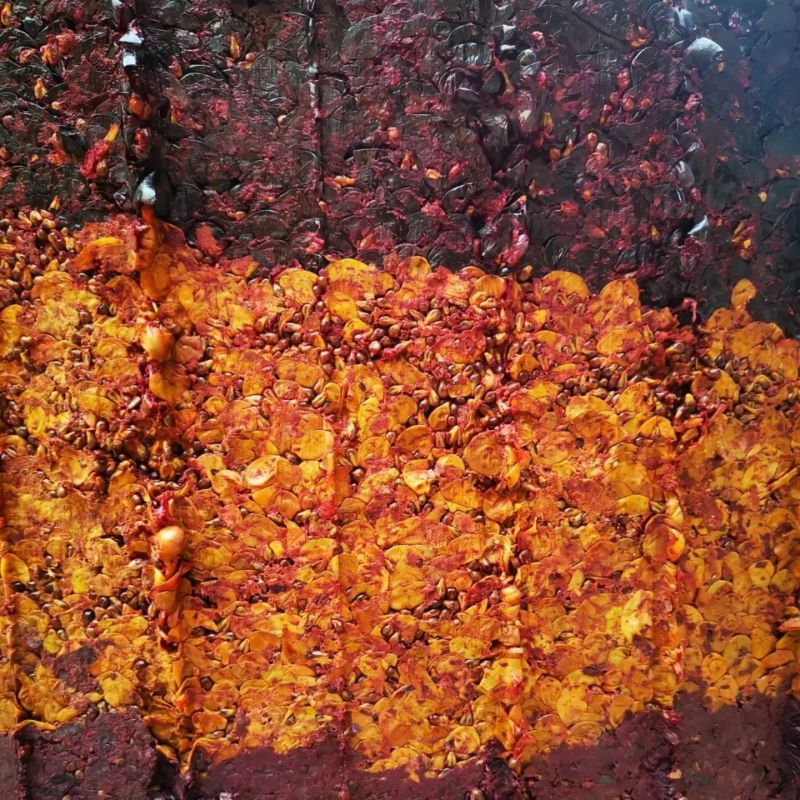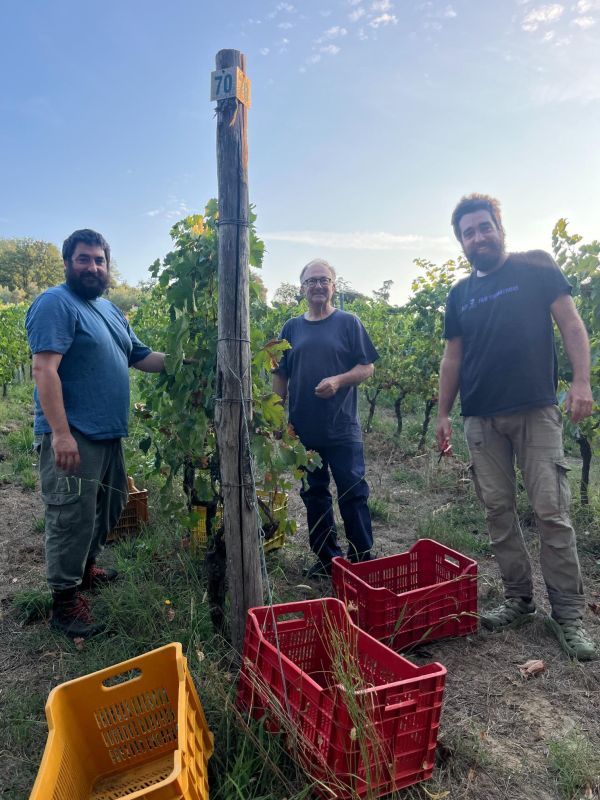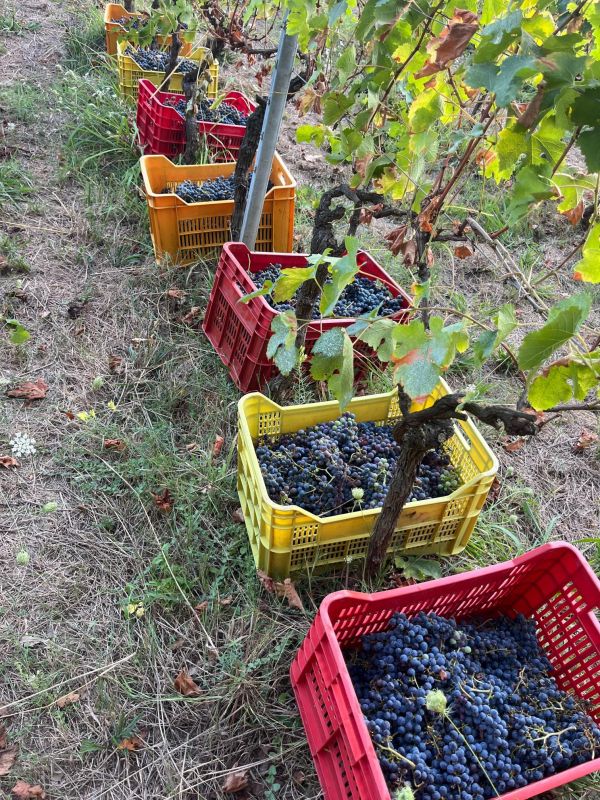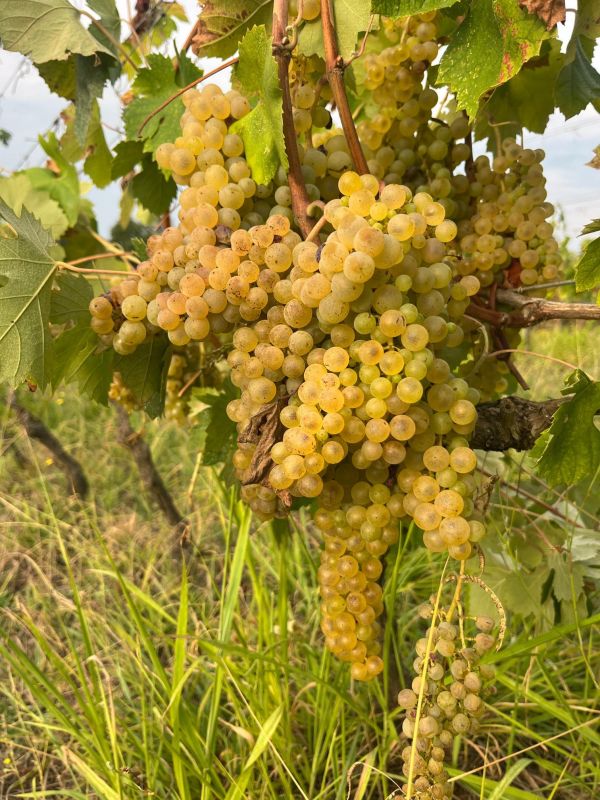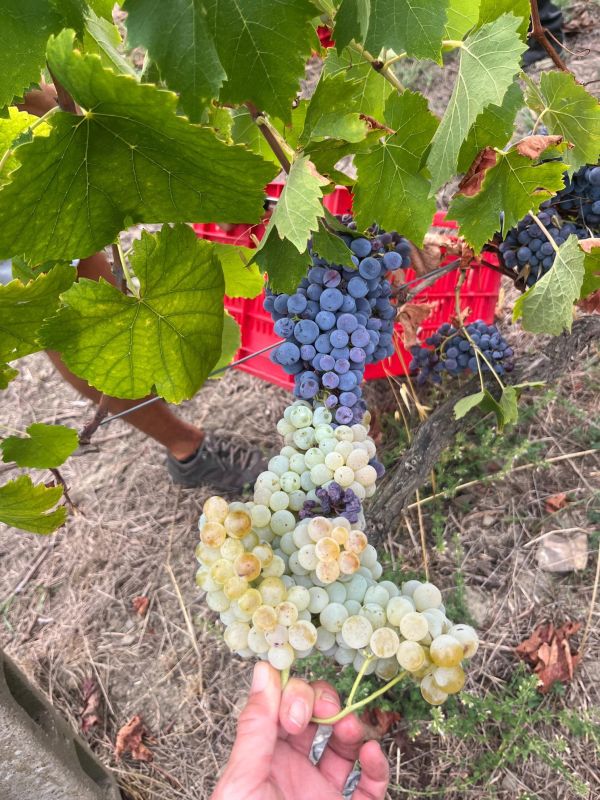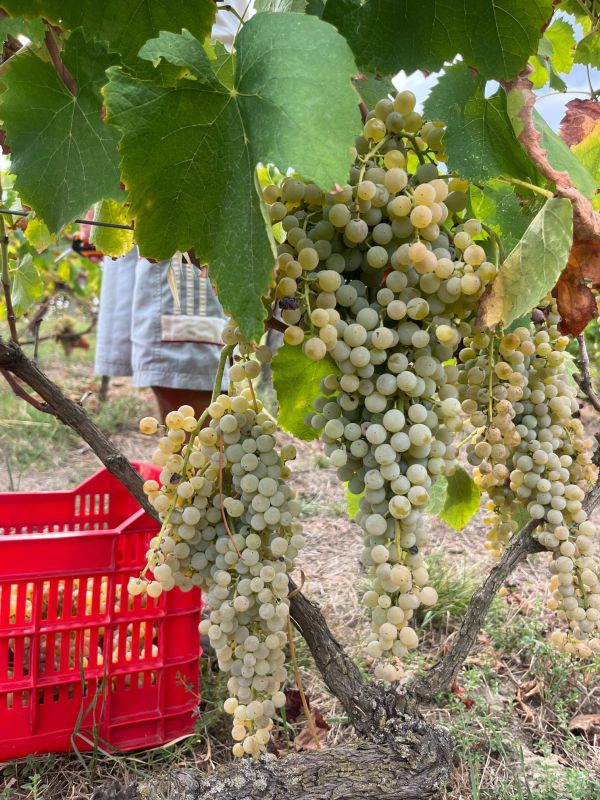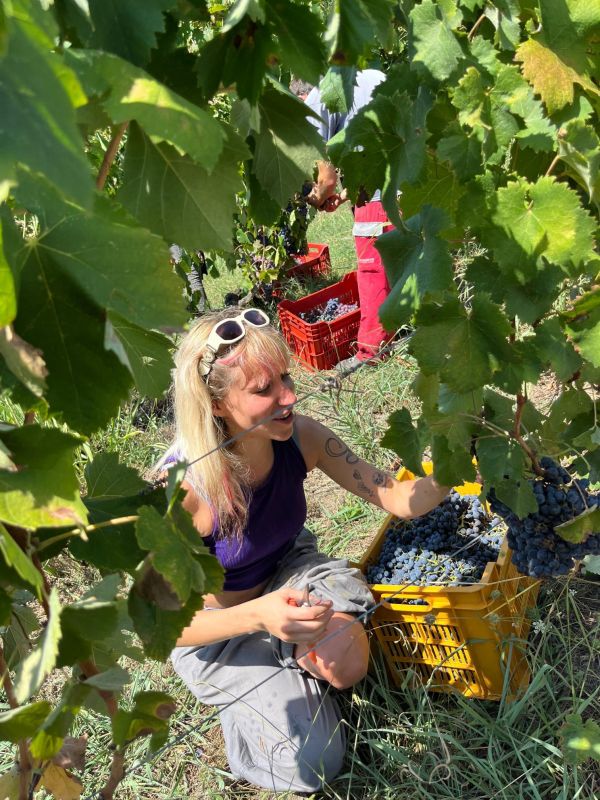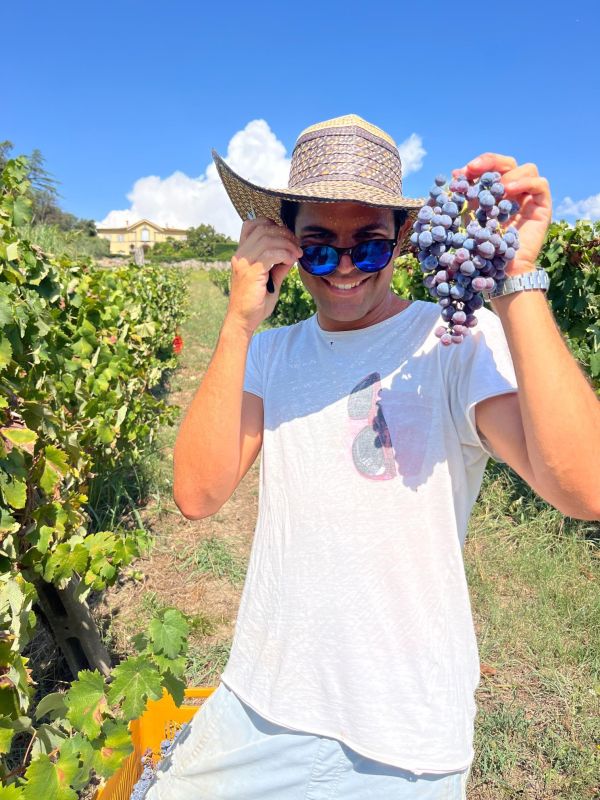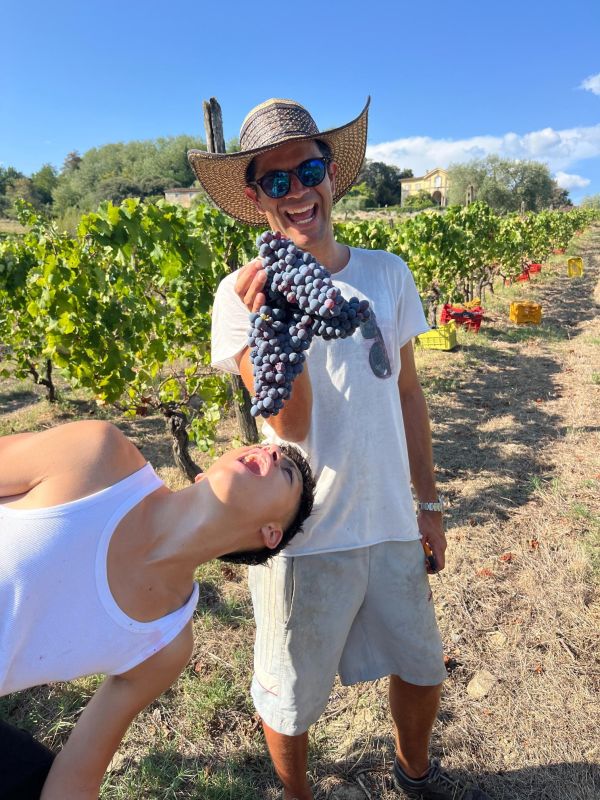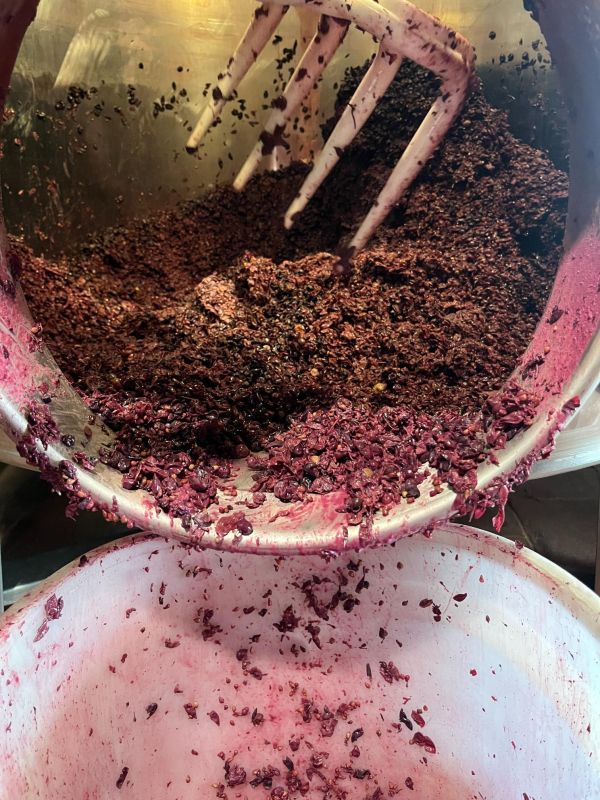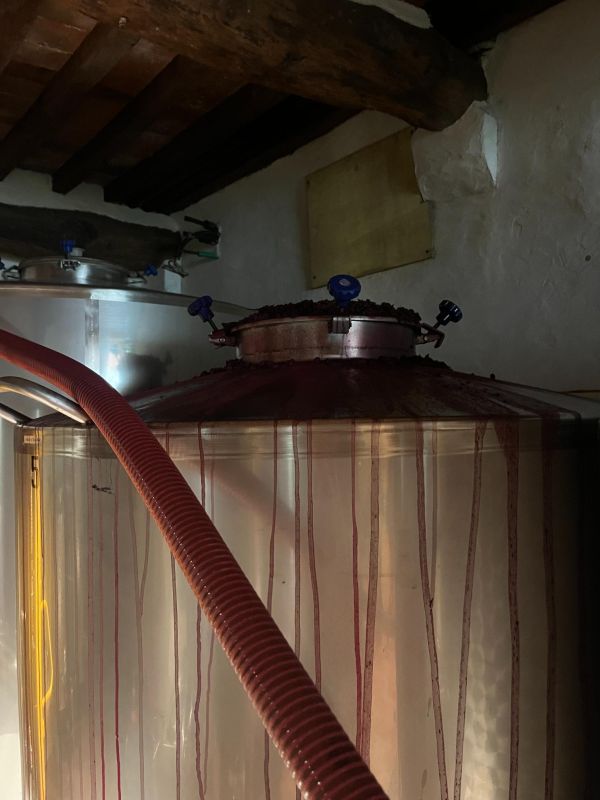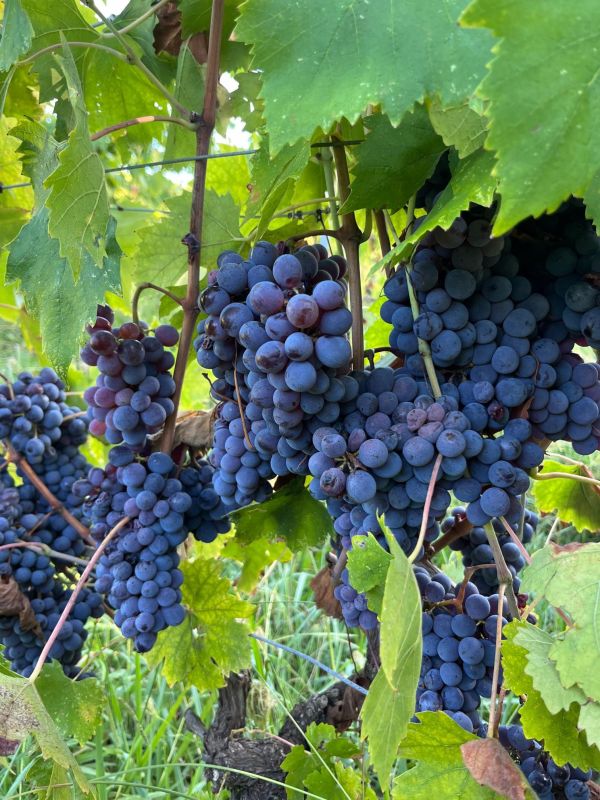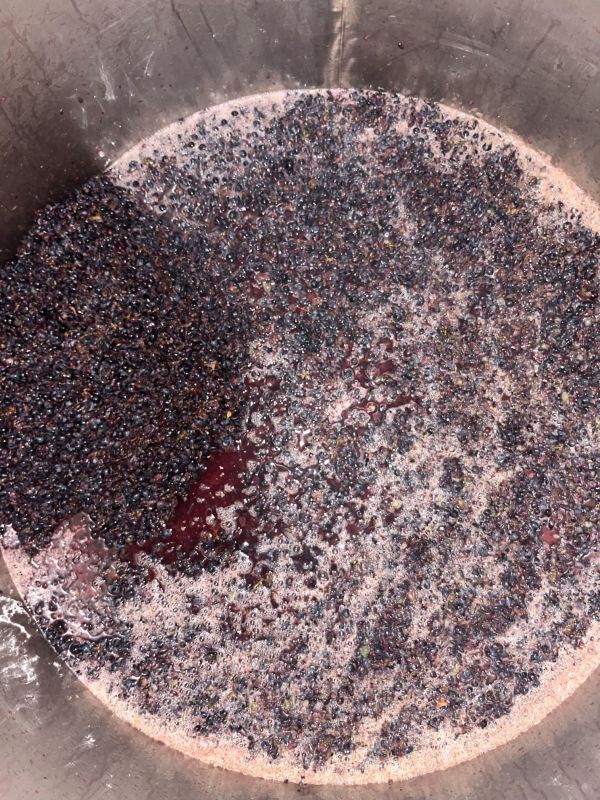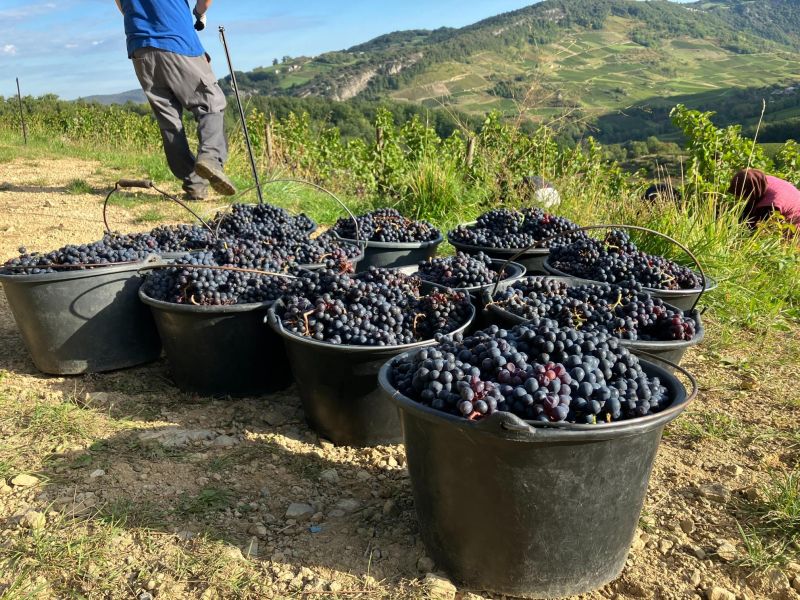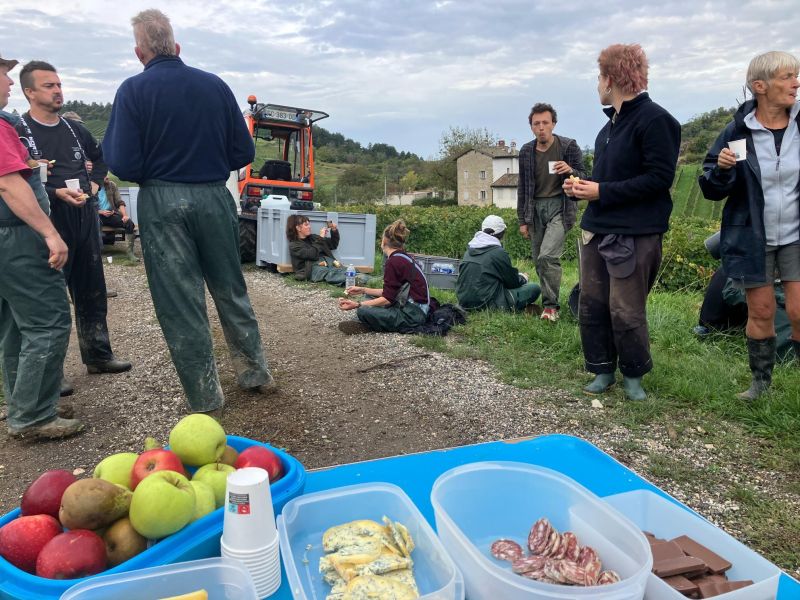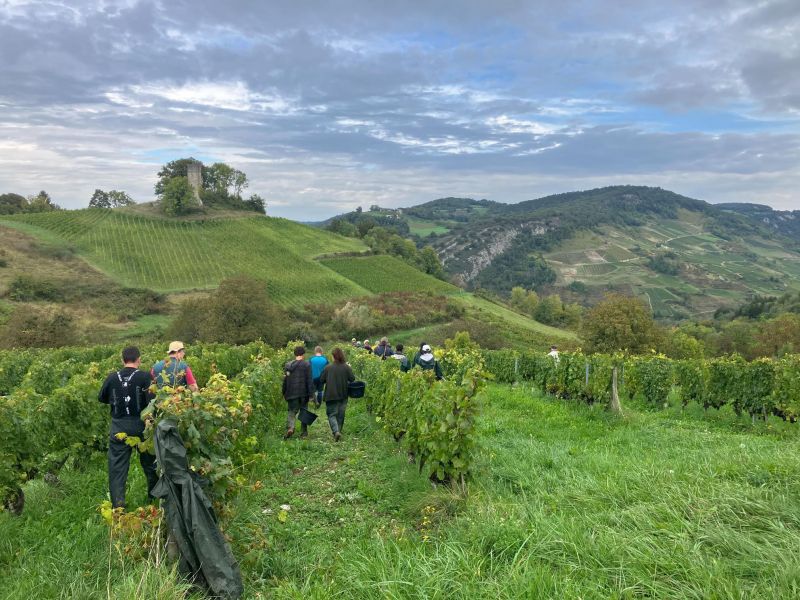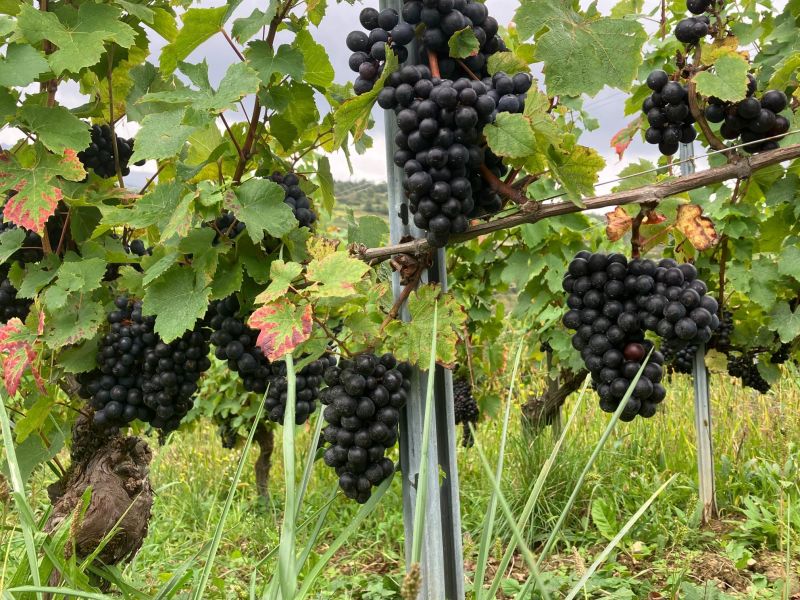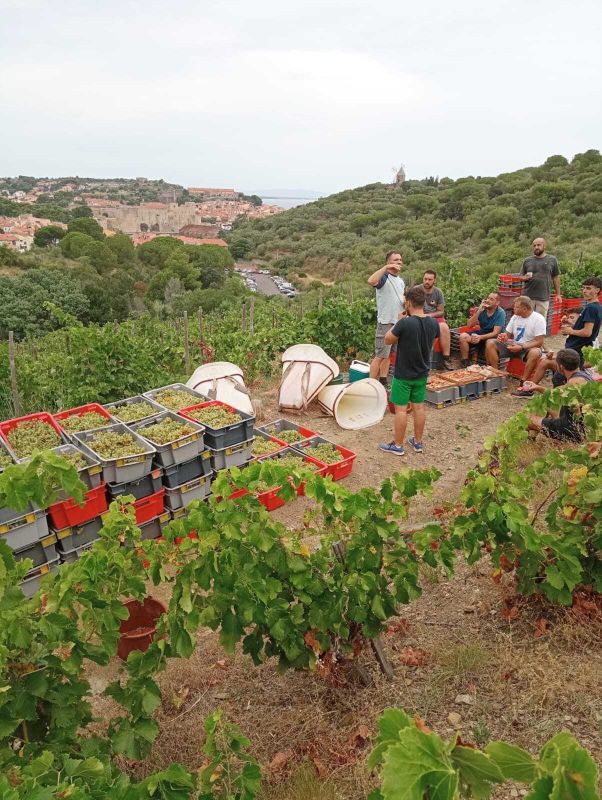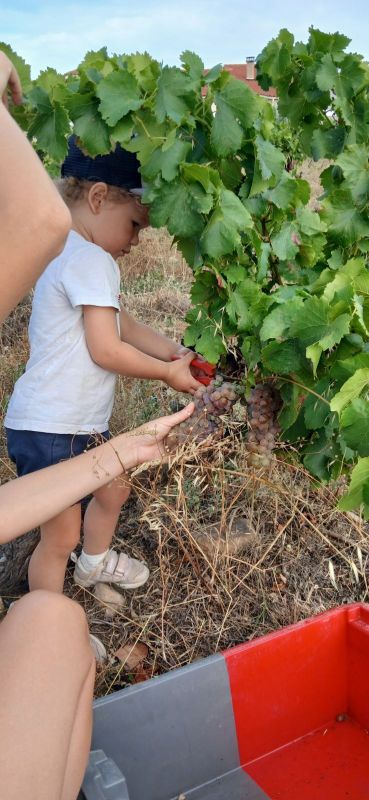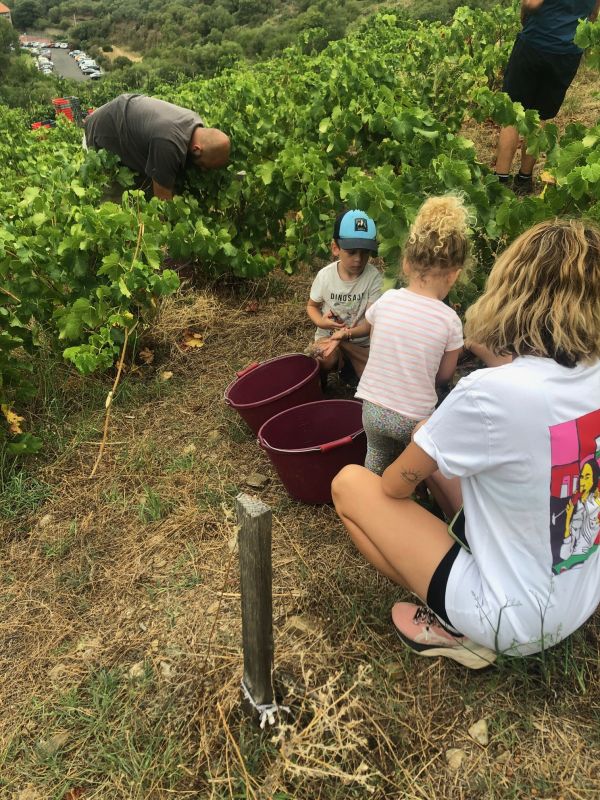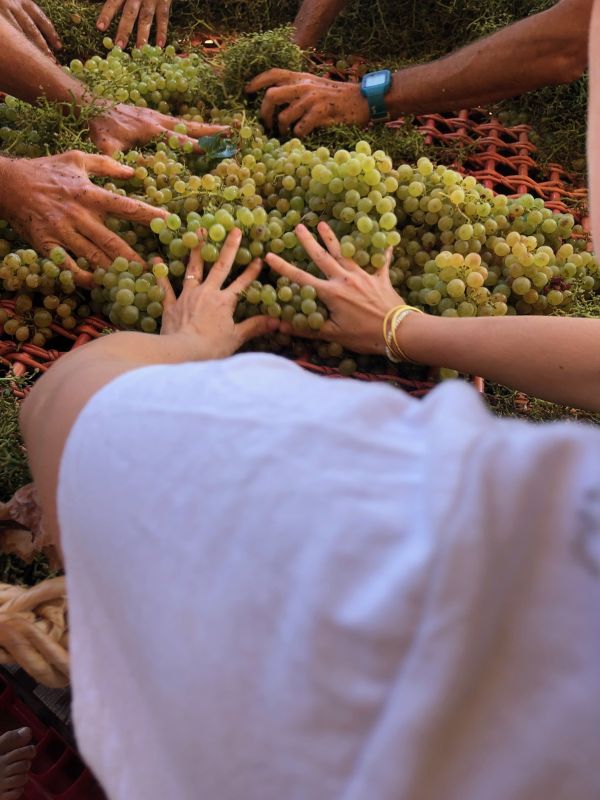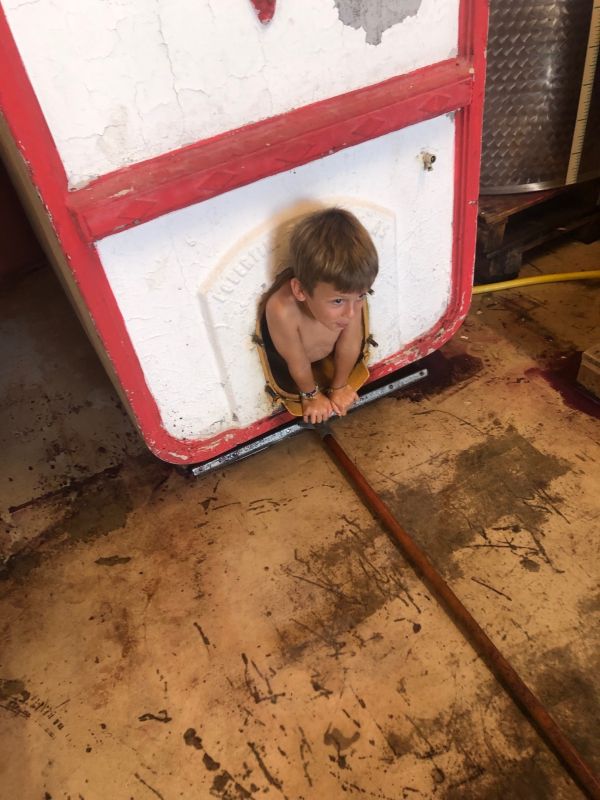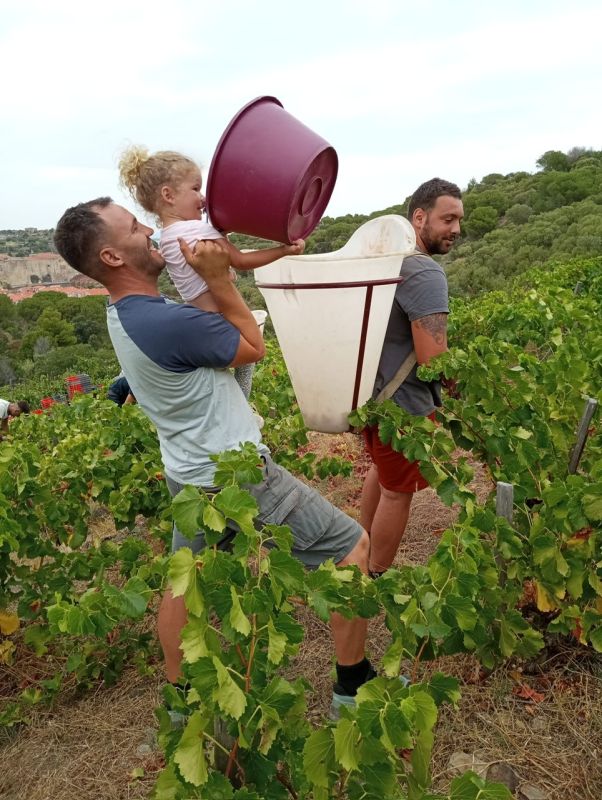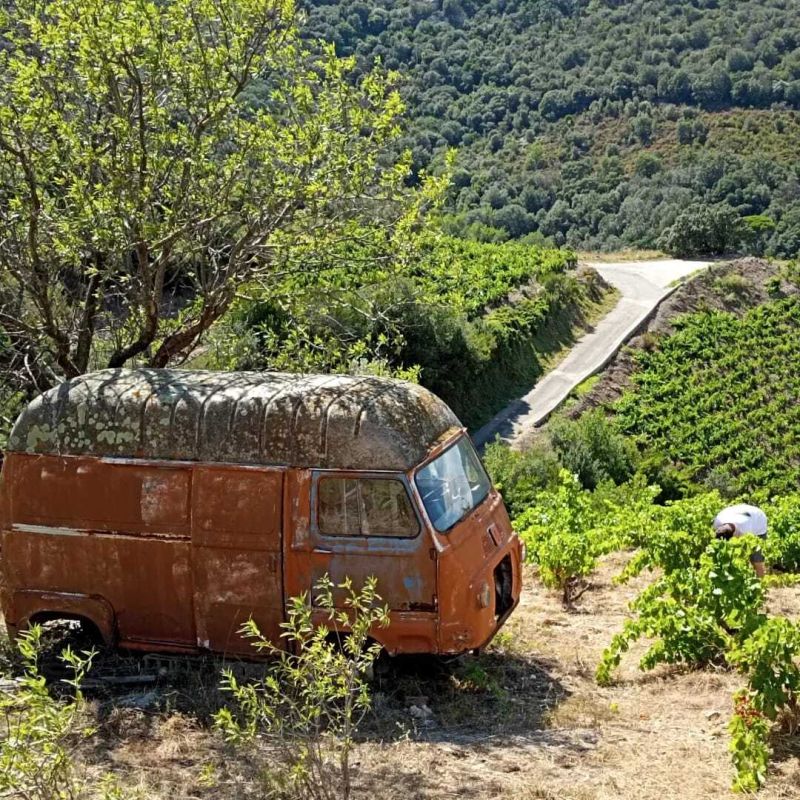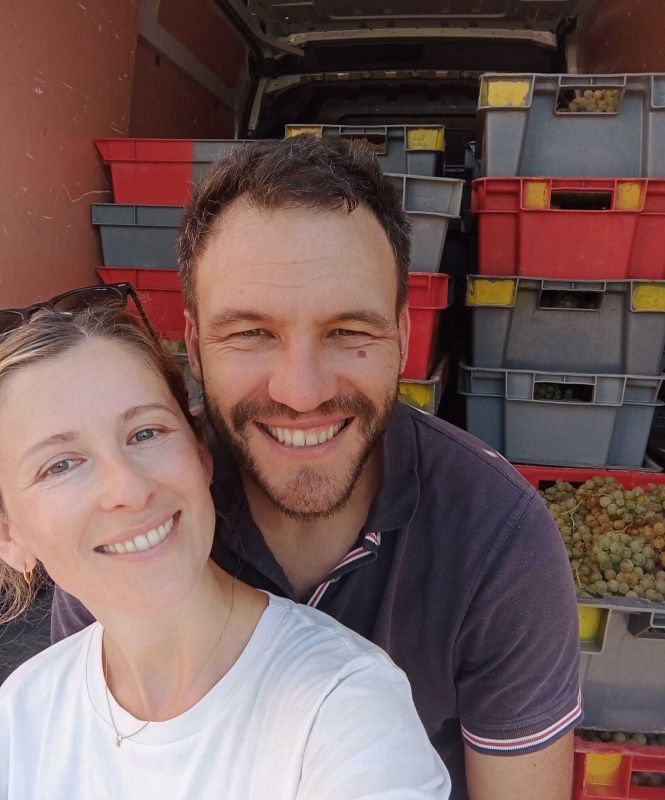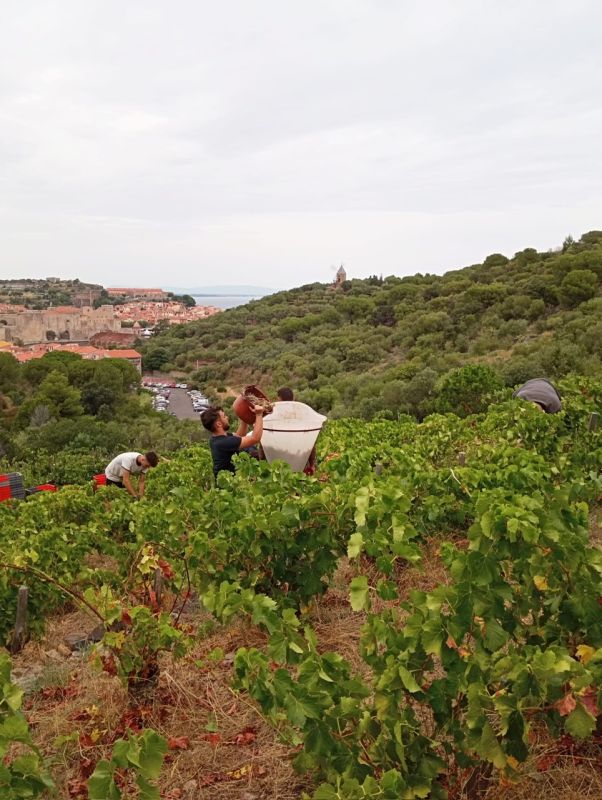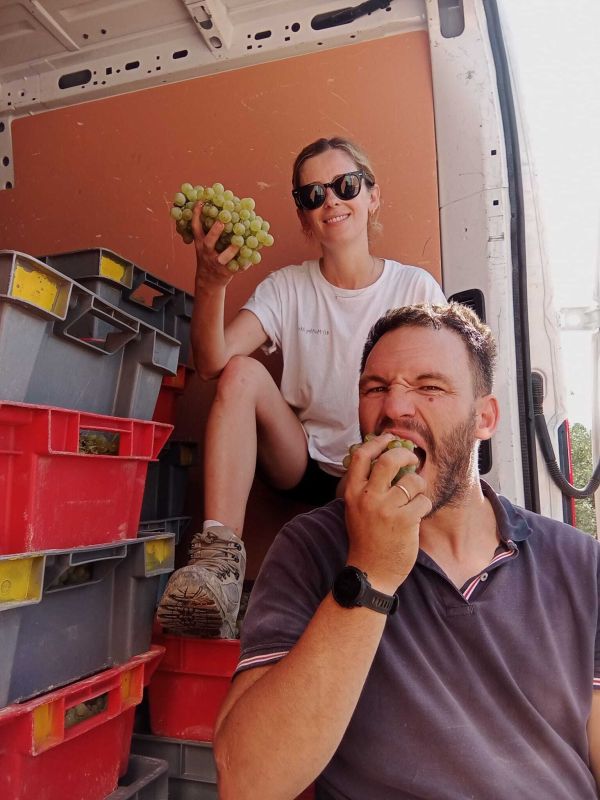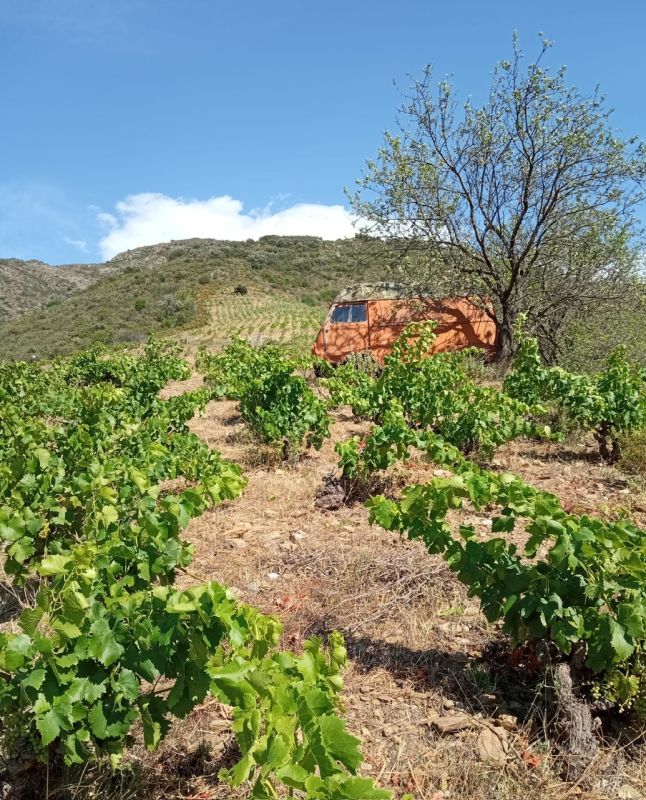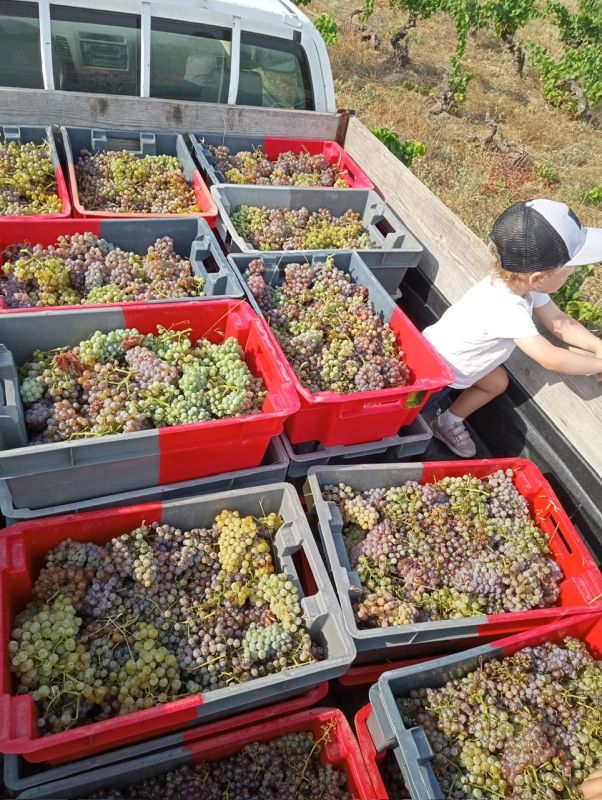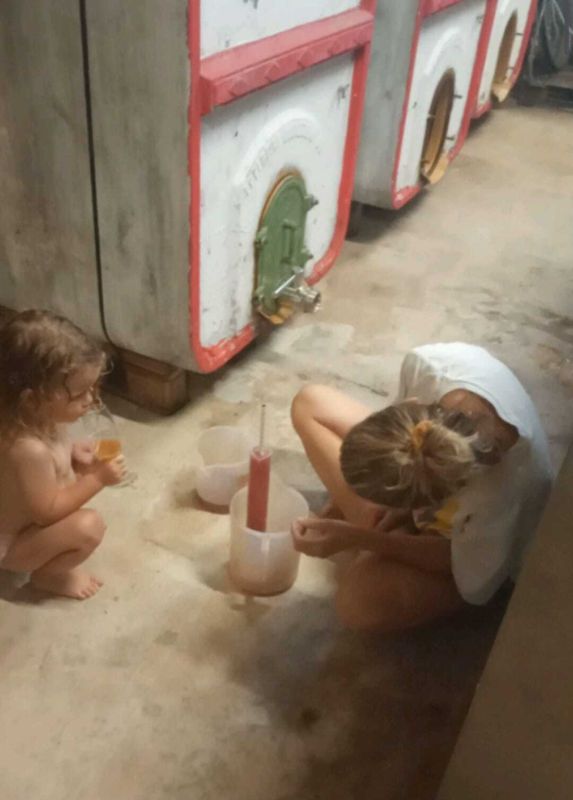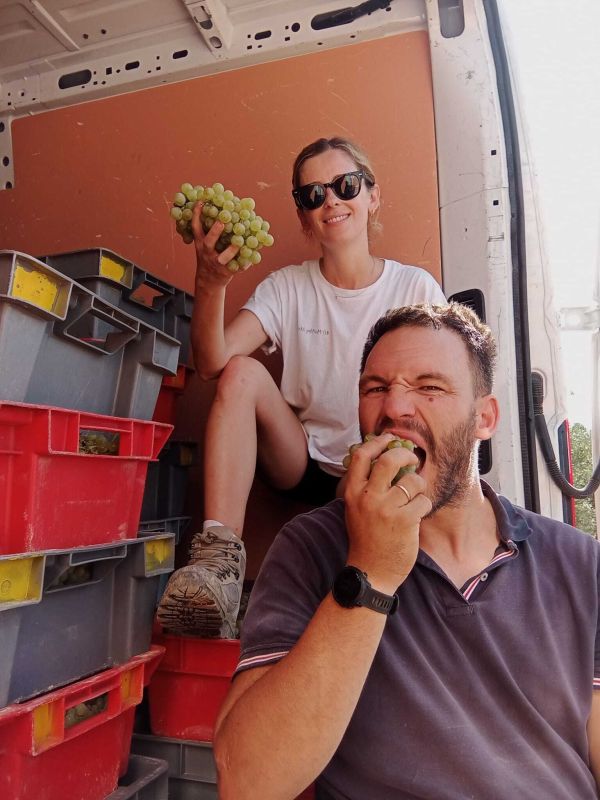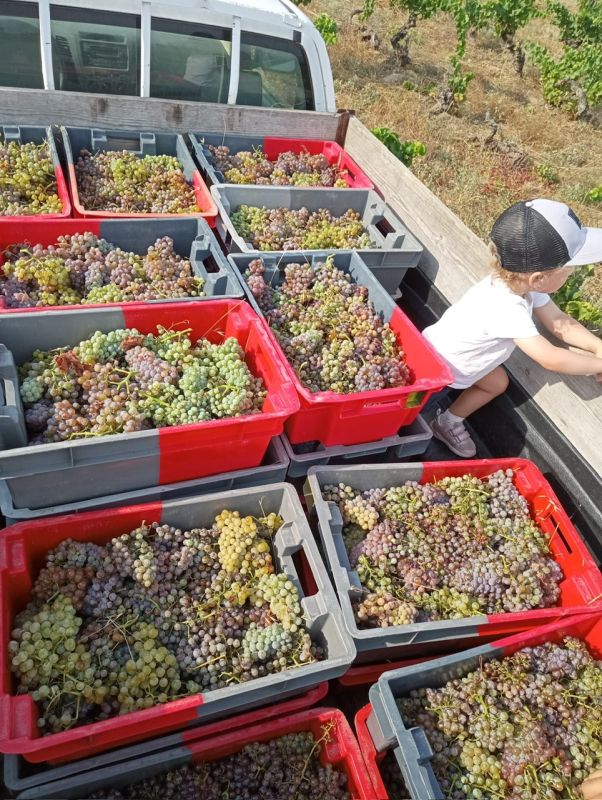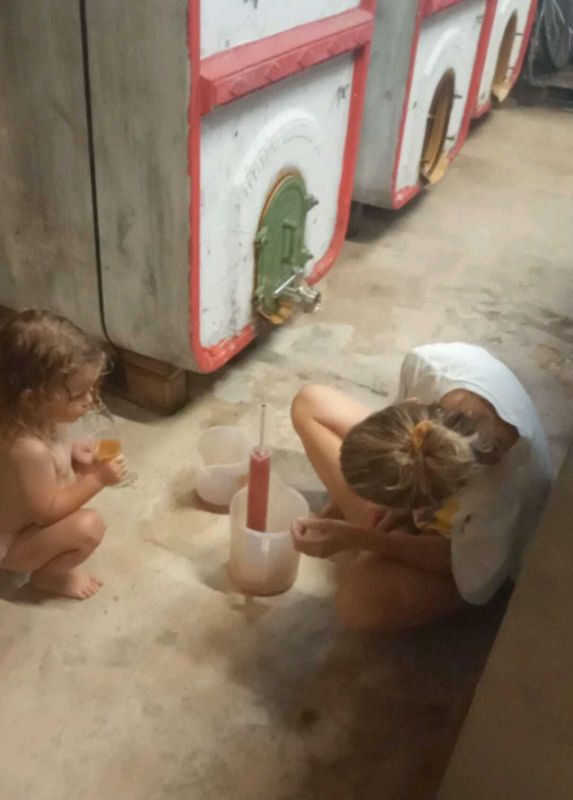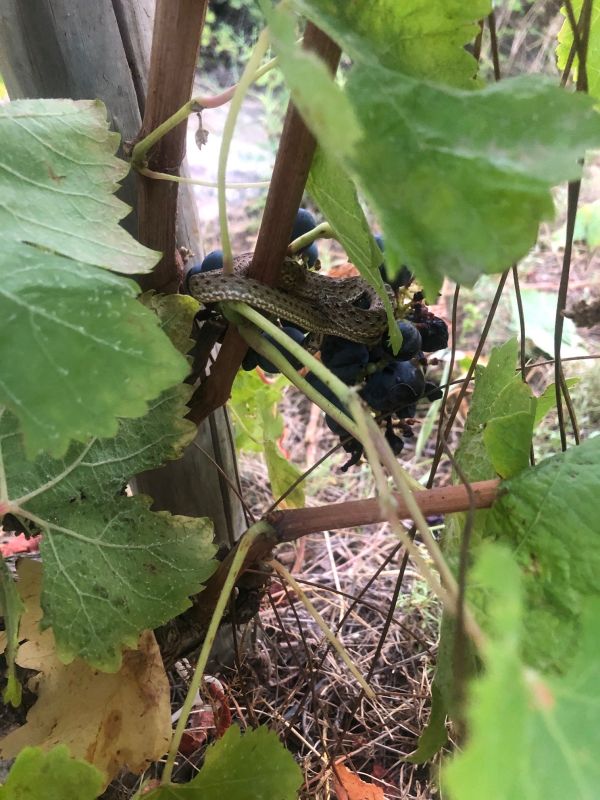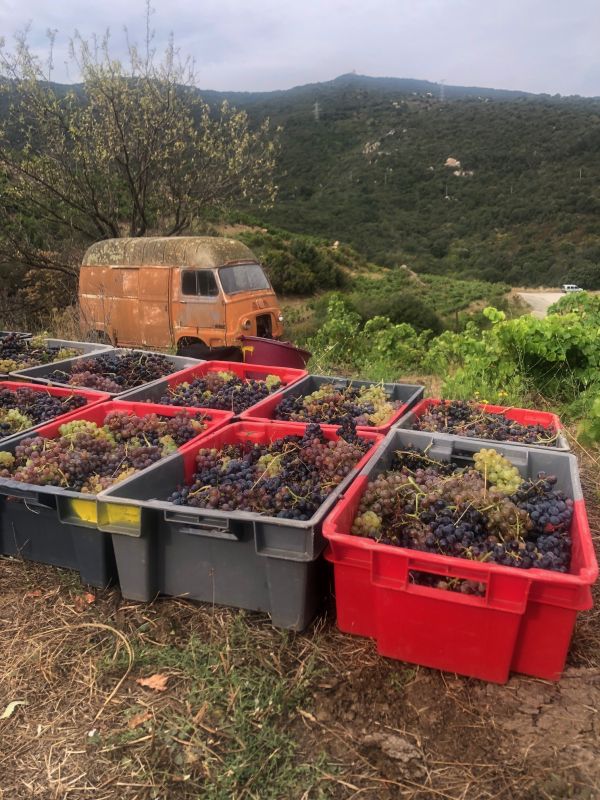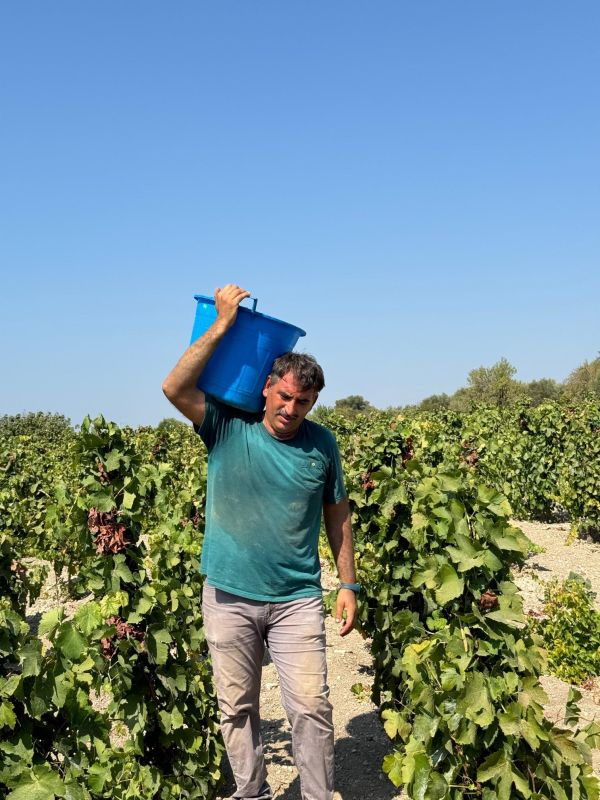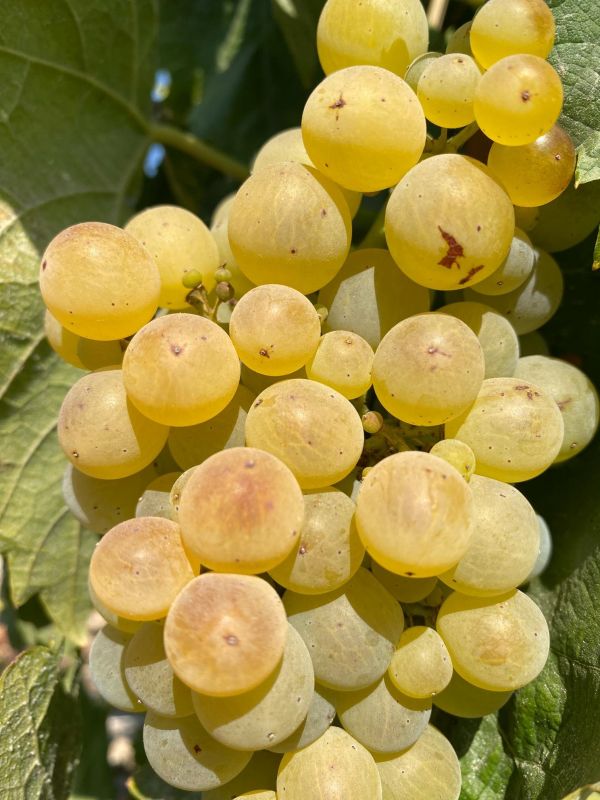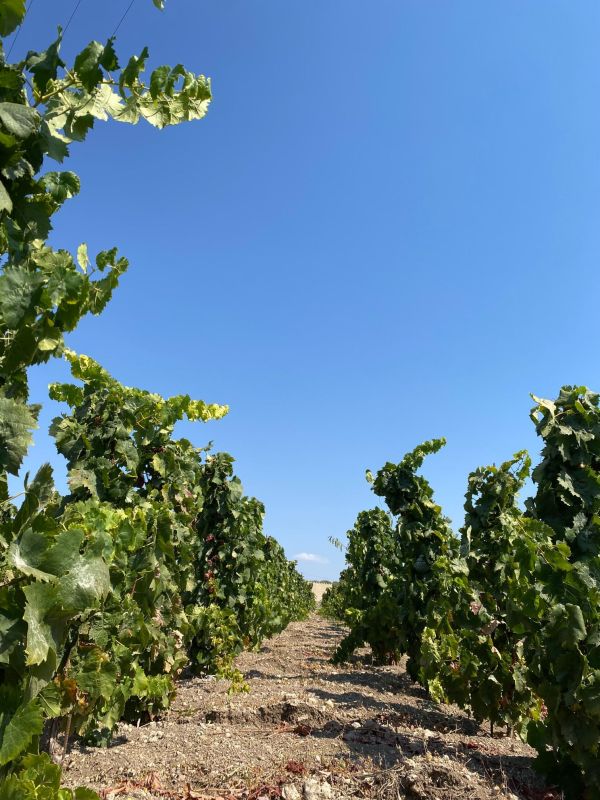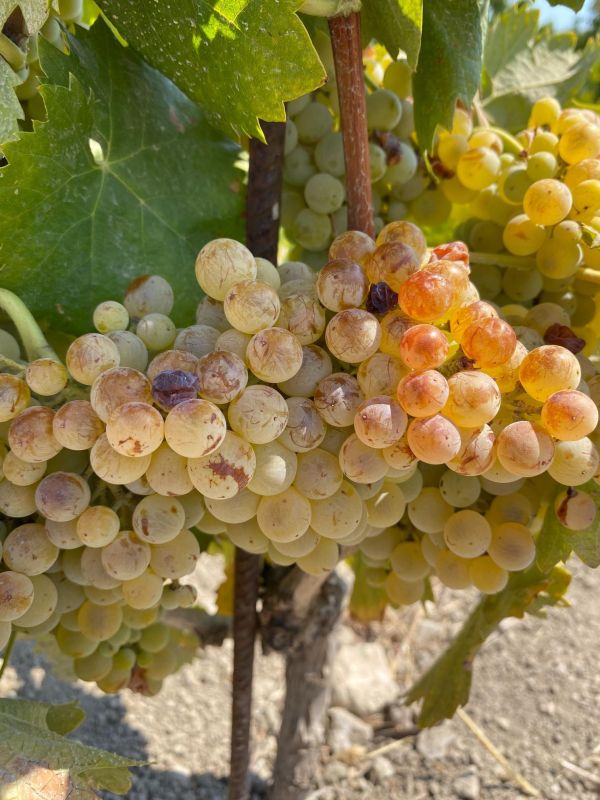It all started with sharps contrasts, especially in March, which swung dramatically from wintry weather with snow and low temperatures in the first two weeks to practically summer weather in the second two weeks. Luckily, because the vines had not yet emerged from their vegetative rest in early March, no damage was done.
This was followed by a rather rainy early spring, particularly in April. Bud burst was on time. May saw the appearance of some mildew which quickly became threatening – hitting a few bunches here and there.
Then we had another a period of going back and forth between cool and warm temperatures leading into the start of flowering in early June. Though flowering started on time, it was very spread out and finished between June 15th and 20th - too long a flowering to end up with homogenous ripening….unless, that is, if we hadn’t gotten the return of extremely high temperatures which, though less intense, reminded us of 2003.
As far as diseases go, the mildew, which had us worried early on, gave way to oidium which kept spreading in July, but thankfully, it never got as bad as it had in 2004.
August came and wiped everything clean with dry, sunny weather, but the lack of water was already having a cruel effect on the more exposed plots (tops of slopes and young vines with shallow roots). Our concerns shifted from worrying about grapes ripening at different times to whether the dryness would prevent the grapes from reaching full ripeness at all.
At last, September came striding in and the ripening process sped up in spite of the significant water deficit. From then on, I knew that I would not reach the minimum yields (60hl), much less the maximum this year of 66hl. The usual 68hl had been lowered because of the wine sale crisis…(which set off the attack on and sacking of the INAO office in Mâcon on September 8th, under the auspices of our local syndicate officials. What stupidity! I had been approached to join this protest movement not knowing how it would end up….but luckily I had declined the invitation).
However, in setting the date of September 1st for the start of harvest in Mâcon and many other appellations, the INAO could have felt safe from these kinds of incidents, but for once the winemakers were in no hurry to rush into their vineyards at that time. I have never seen such large variations in when various vineyards were ready to start harvesting. There were still winemakers (apart from the usual suspects) who on September 15th had hardly begun. People were saying in some cases (especially in the northern areas) that the grapes weren’t ripe yet and in other cases, that the winemakers felt in no hurry because of the dry weather and excellent health of the grapes. It all got picked eventually.
In the cellar, the first surprises showed up in the lab analyses. Of course, given the weather conditions of this year, we found deficits in the levels of nitrogen, but what completely shocked us was that the acidity levels were normal or even a little weak in relation to abnormally low pH levels. It was not unusual to find acidity levels of less than 5 g/l accompanied by pH levels of around 3 with 13 degrees of potential alcohol, whereas normally at these levels of acidity, the pH is closer to 3.15 or indeed even 3.20 or 3.25. This presages excellent balance, I think, particularly since it should put us out of any danger of anything going wrong during vinification aging. The fermentations went well, slowly, and without any particular heating up. Most of the cuvées are finishing now.
On the other hand, if these kinds of pH levels are a sure sign of very good balance, when it comes to starting malolactic fermentations, it’s a whole other story. I’m trying hard with my Mâcon cuvée and the others which are in the process of finishing their alcoholic fermentations, notably the "Franclieu", in the hope of doing an early spring bottling in March or April.
In terms of quality, as you already know, on the whole it is a good vintage. Will it be an exceptional vintage? It may be a little too early to tell, probably for some cuvées.
Right now, you will be happy to hear, the "Franclieu" and the "Cuvée Vieilles Vignes" (which still has some sugar left and therefore needs to be watched carefully) look the best. The others look good too but for the time being these two stand out from the crowd. The "Franclieu" has very good nose and mouth, which is not always the case at this stage at the end of the alcoholic fermentation, strong aromas, very good structure and lots of character in the mouth. Let’s hope that all this lasts and is confirmed with time.
